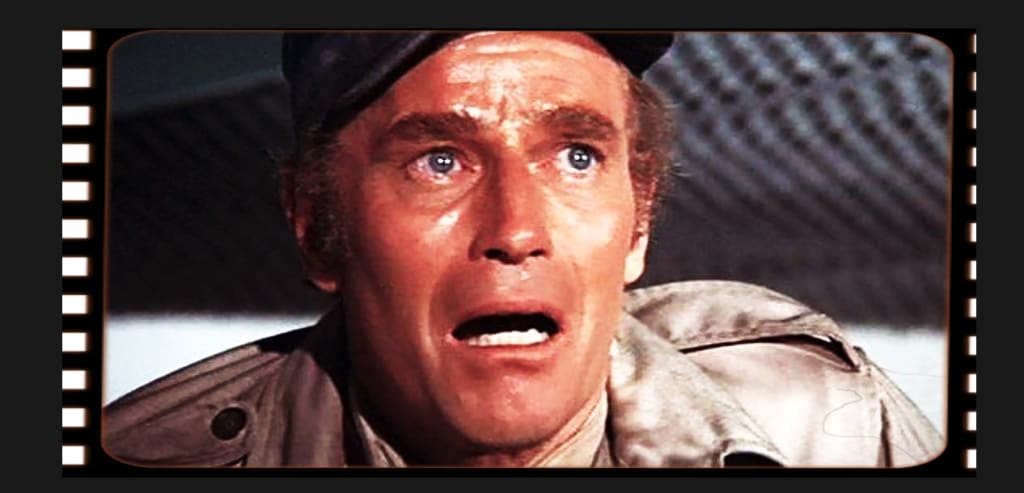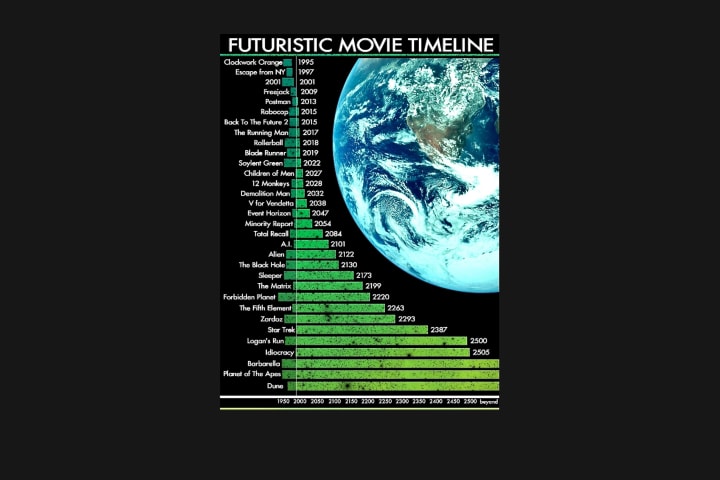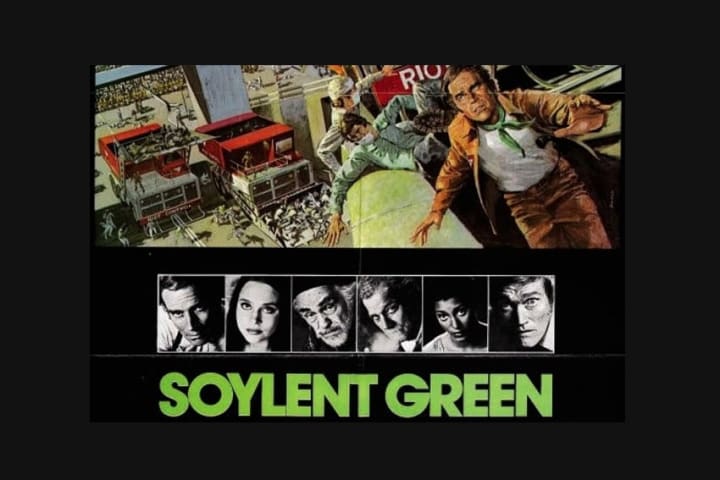Make Room! Make Room! ‘Soylent Green’ Revisited
This Earth Day 2021, make room for a repeat viewing of a movie that first played in theaters in 1973. Pass the popcorn! Just lay off the green stuff.

Det. Thorn (Charlton Heston) to his roommate Sol (Edward G. Robinson) in Soylent Green: “I know, I know. When you were young, people were better.”
Sol: “Aw nuts. People were always rotten. But the world was beautiful.”
•
If you’re like me, you take sci-fi movie timelines with a pinch of salt. Escape from New York, which imagined a hellish, dystopian vision of Manhattan as a walled-off maximum-security prison of the future, was set in the year 1997.
2001: A Space Odyssey, which envisioned a manned space expedition to Jupiter, was set in the year, well, you know.
Minority Report, which foresees a not-too-distant future where police solves crimes before they happen — using pre-cognitive technology to identify anyone prone to committing violent acts — is set in the year 2054. That not only seems possible, but with AI making the advances it is — abuses and all — it doesn’t seem that far off.
Star Trek is set in the year 2387, which sounds somewhat arbitrary, if not made up off the top of somebody’s head. Sleeper is set in the year 2173 — "200 Years In the Future!" the movie posters proclaimed — while Logan’s Run, which predicted a hermetically sealed society in which no one is allowed to live beyond age 30, is set in the year 2500.
Not so long ago the pop-culture website DanMeth.com, (tagline: “Humorous graphs illustrating pop-culture concepts”) put together a handy, easy-to-read chart of which sci-fi movie was set in what year, give or take a decade or two, and it makes for fun, lively reading, and even livelier conversation.

We learn that A Clockwork Orange, for example, was set in the year 1975 — somebody missed the boat on that one — while Dune, the original, is set so far in the future it doesn’t bear thinking about. (Dune is in fact set in the year 10,191, if you’re a stickler for detail. Now you know.)
The one that jumped out me, though, and the one likely to be subject to renewed focus as the world lurches ever more inexorably toward climate catastrophe and collapse of the world’s food-growing capacity, is the dystopian detective thriller Soylent Green, which came out in 1973 but is set, wait for it, in 2022.
The film was loosely based on Harry Harrison’s 1966 sci-fi classic Make Room! Make Room! and tells the story of an investigation into the murder of a corporate executive in his luxury apartment during a burglary gone wrong. Soylent Green is set a dystopian semi-future where choked, overcrowded cities are locked in a losing battle against pollution, poverty, dying oceans, depleted resources, environmental destruction, global heating caused by climate catastrophe, and the collapse of the world’s food production.
Sound familiar?
Most working people in Soylent Green’s hellscape survive on tightly rationed processed food, the most popular of which — hungry people riot in the streets over shortages! — is a high-protein foodstuff called “soylent green.”
Charlton Heston plays the investigating detective, Det. Thorn; Robinson plays his aging roommate Sol, in a world where only the very rich can afford their own apartment and even a cop on detective's pay doesn't make enough money to find an apartment of his own in the city where he works, unless he takes in a roommate.

Soylent Green opened in theatres during the time of Flower Power, hippie be-ins, protests against the Vietnam War and the rise of the Civil Rights movement. At the time, the year 2022 must have seemed far enough into the future as to be not worth thinking about.
How to count the ways Soylent Green got it right, even as critics at the time carped that it was absurdist alarmism, more handwringing from libtards, bunny huggers and unrepentant hippies who hate Big Oil, fast-food burgers and anyone who makes money.
Sure, Soylent Green seems a little tired and dated now, not to mention slow-paced and not too nifty in the special effects department, but here’s what it got right:
• When faced with an existential crisis, whether it’s climate catastrophe or not enough food to go around, most governments resort to corruption coupled with overenthusiastic policing. Det. Thorn thinks he's doing good, but he soon learns he’s merely doing the bidding of the Man.
He’s told in no uncertain terms that any questions he may have about what he’s doing, why he’s doing it and whether it’s doing any good, is beyond his pay grade. Do as you’re told, and don’t ask questions.
• In a society where only the very rich can afford decent shelter, a police detective can’t even live in the community he serves without taking on a roommate. In Thorn’s case, that means a grumpy old man who keeps pining for good-old-days, when trees were everywhere and you could swim in a lake without worrying whether you’d come down with a toxic rash.

When virtually all food looks, tastes and smells like reconstituted breakfast cereal, a bowl of fresh strawberries costs an arm and a leg — literally.
Soylent Green was one of the few Hollywood movies of the time to predict global warming, and show the effects.
Euthanasia — by choice, of course — is an effective means of population control, and comes with the added benefit of dealing with an aging work force no longer of use to the Man. And if voluntary euthanasia isn’t enough to deal with the crisis at hand, then there’s always a government willing and able to do away with the “by choice” part.
“You know,” Edward G. Robinson’s character reminisces in the film, “when I was a kid, food was food. Before our scientific geniuses poisoned the water, polluted the soil, decimated plant and animal life — why, you could buy meat anywhere. Eggs, they had. Real butter. Fresh lettuce in the fridge.”
Food for thought.
Soylent Green, 1973, directed by Richard Fleischer, written by Stanley R. Greenberg from the novel by Harry Harrison, starring Charlton Heston, Leigh Taylor-Young and Edward G. Robinson in his last film appearance.
Check it out.
Just in time for Earth Day.
About the Creator
Hamish Alexander
Earth community. Visual storyteller. Digital nomad. Natural history + current events. Raconteur. Cultural anthropology.
I hope that somewhere in here I will talk about a creator who will intrigue + inspire you.
Twitter: @HamishAlexande6






Comments
There are no comments for this story
Be the first to respond and start the conversation.